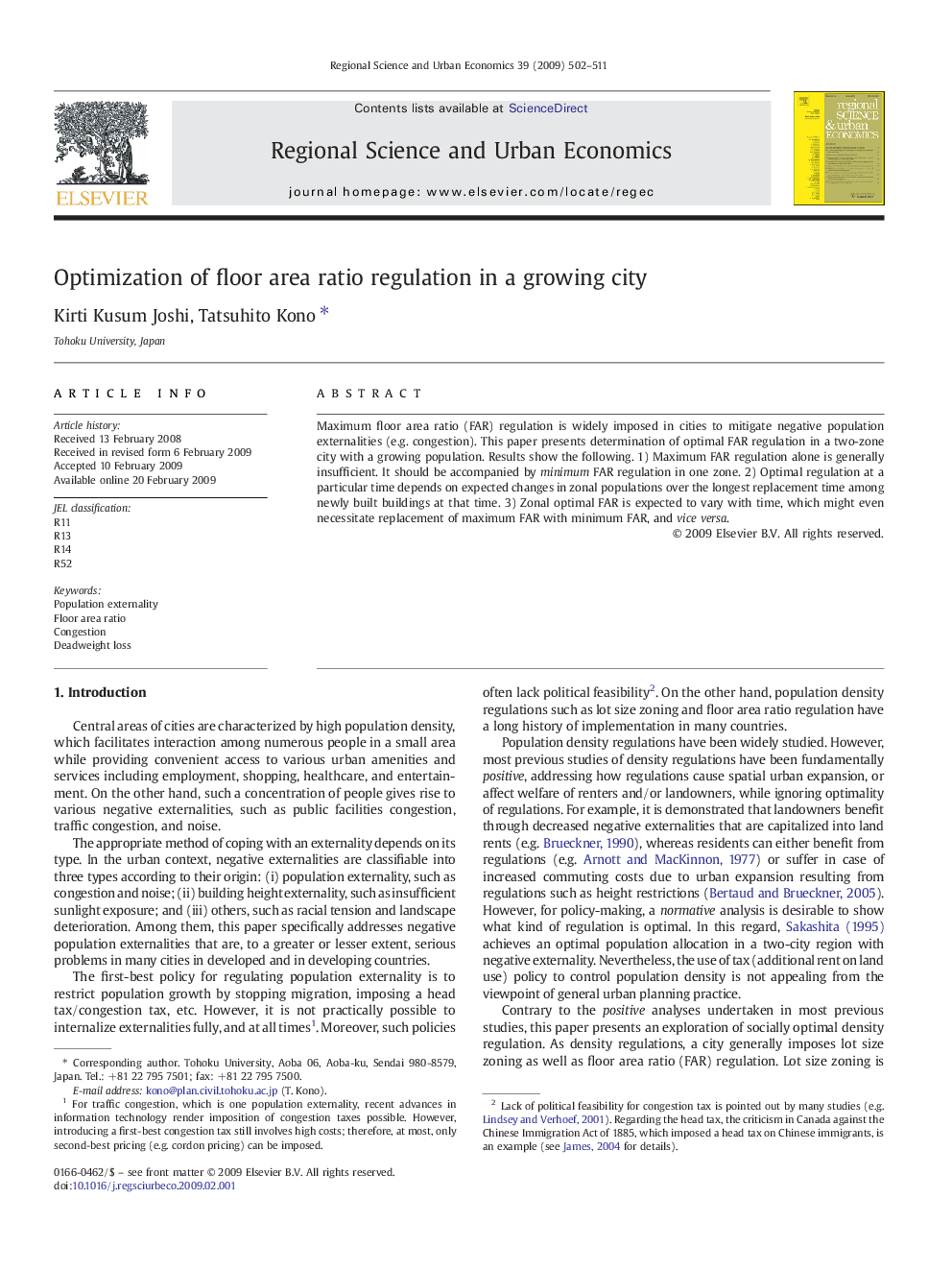| Article ID | Journal | Published Year | Pages | File Type |
|---|---|---|---|---|
| 983852 | Regional Science and Urban Economics | 2009 | 10 Pages |
Abstract
Maximum floor area ratio (FAR) regulation is widely imposed in cities to mitigate negative population externalities (e.g. congestion). This paper presents determination of optimal FAR regulation in a two-zone city with a growing population. Results show the following. 1) Maximum FAR regulation alone is generally insufficient. It should be accompanied by minimum FAR regulation in one zone. 2) Optimal regulation at a particular time depends on expected changes in zonal populations over the longest replacement time among newly built buildings at that time. 3) Zonal optimal FAR is expected to vary with time, which might even necessitate replacement of maximum FAR with minimum FAR, and vice versa.
Related Topics
Social Sciences and Humanities
Economics, Econometrics and Finance
Economics and Econometrics
Authors
Kirti Kusum Joshi, Tatsuhito Kono,
